Abstract
We conducted a functional assessment of problem behaviors of 2 students with developmental disabilities in their classroom environments. Results of the assessments showed that although there were more tantrums in demand than in no-demand conditions, the function of the behavior was to gain attention (positive reinforcement) rather than to avoid or escape demands (negative reinforcement); demand conditions apparently served a discriminative function for the availability of attention. Therefore, intervention was based on the positive reinforcement hypothesis, resulting in a substantial reduction of tantrums for both subjects.
Full text
PDF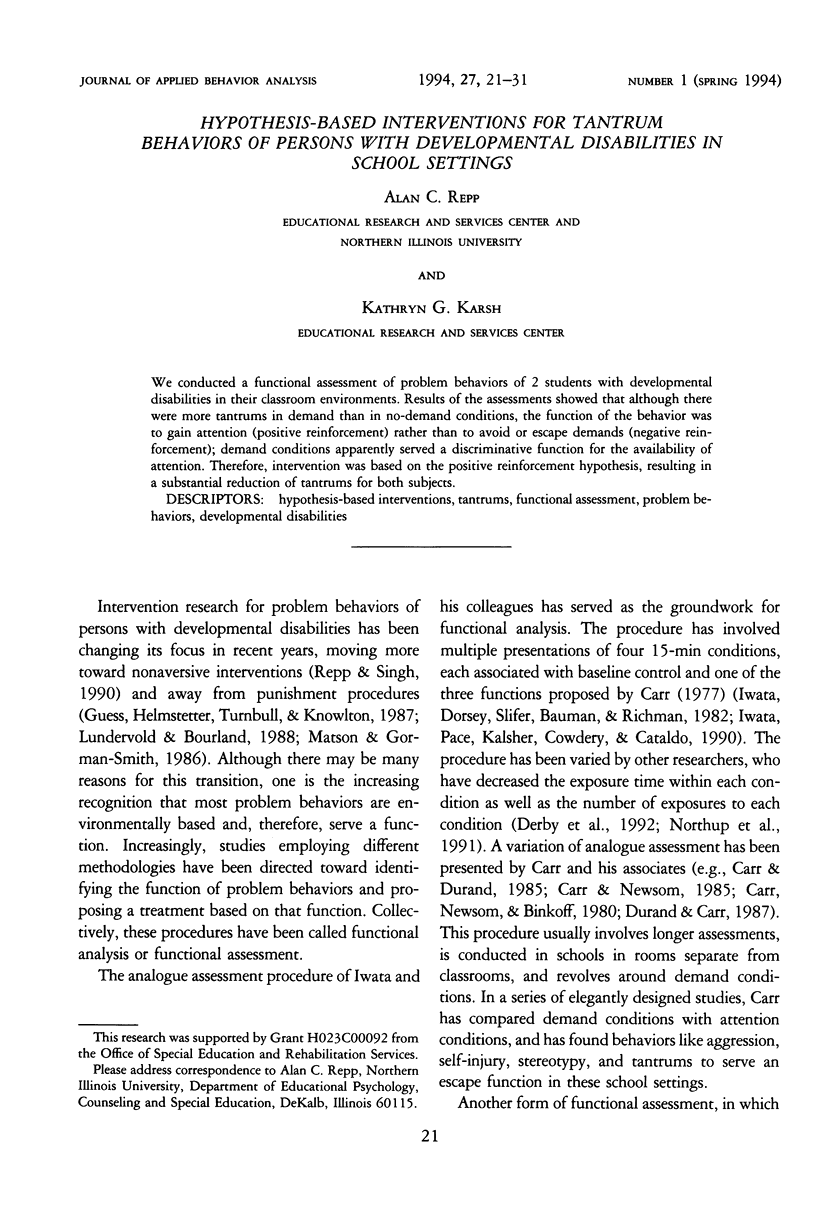
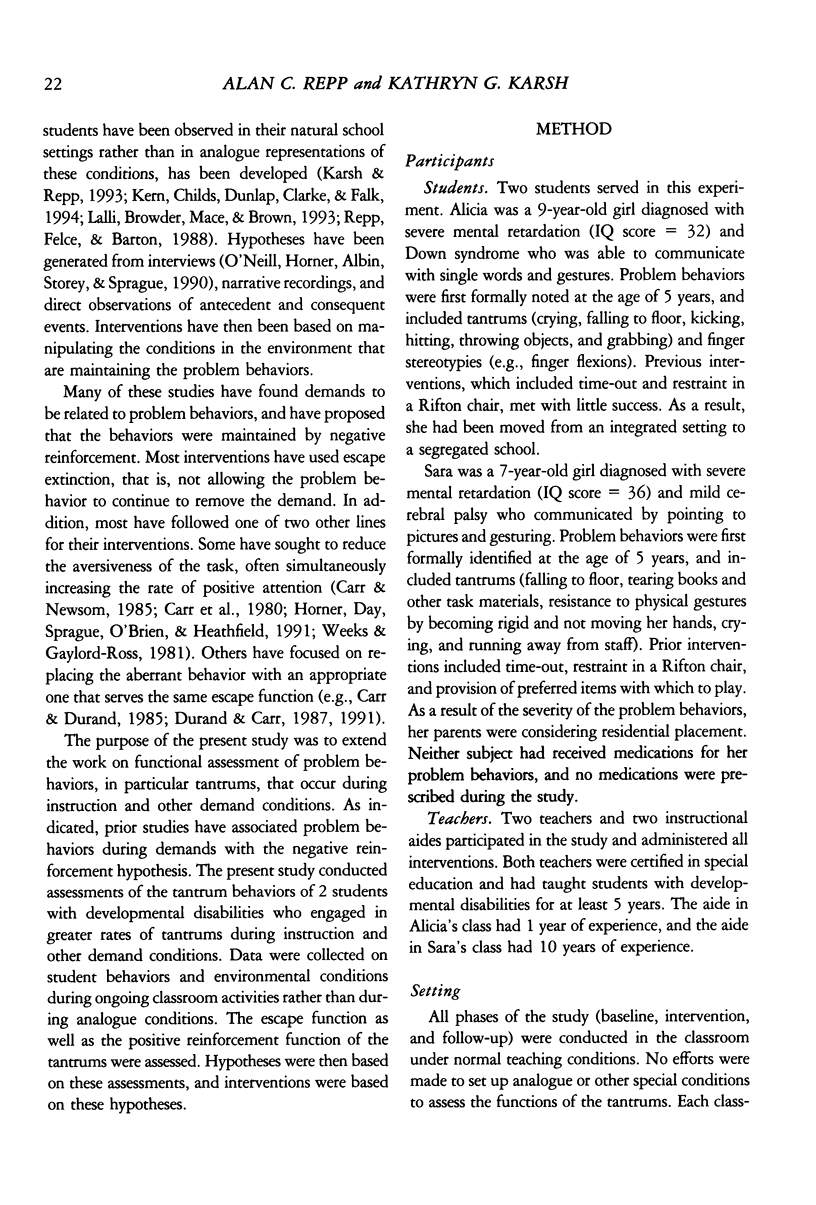
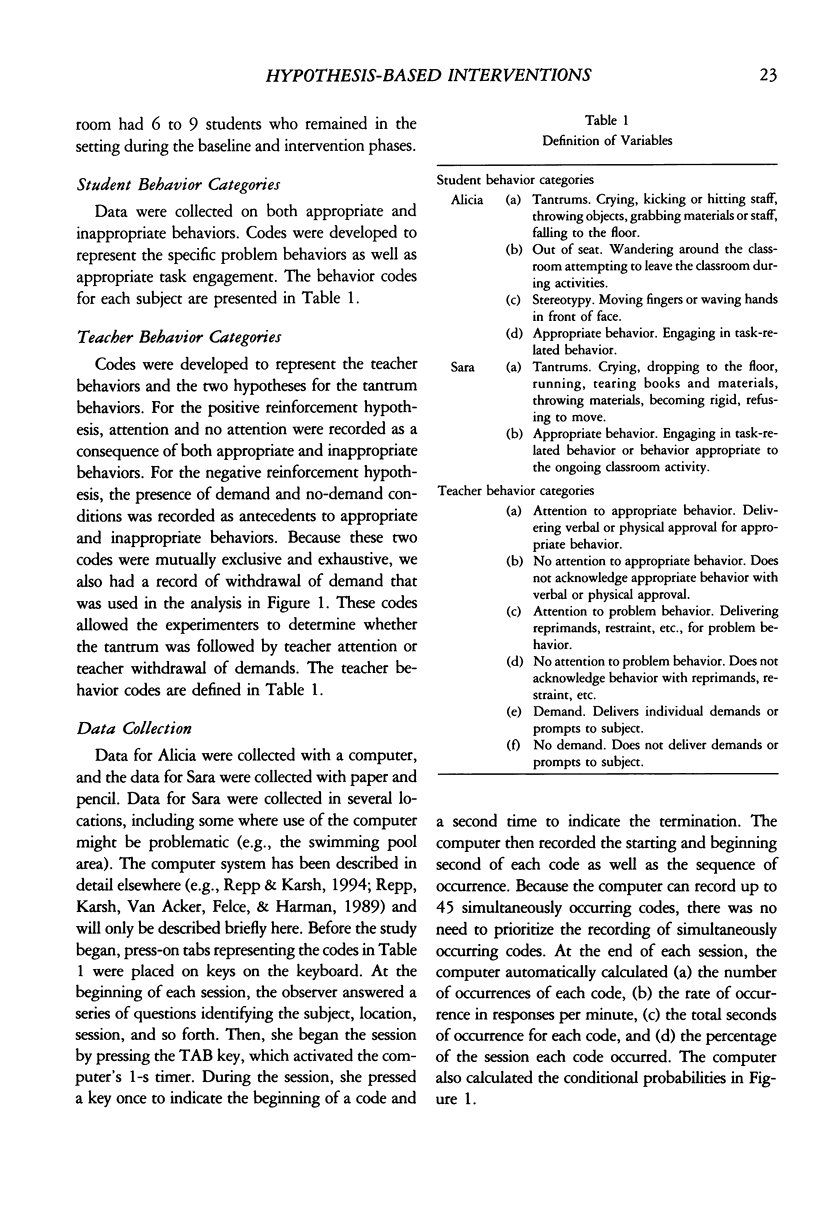
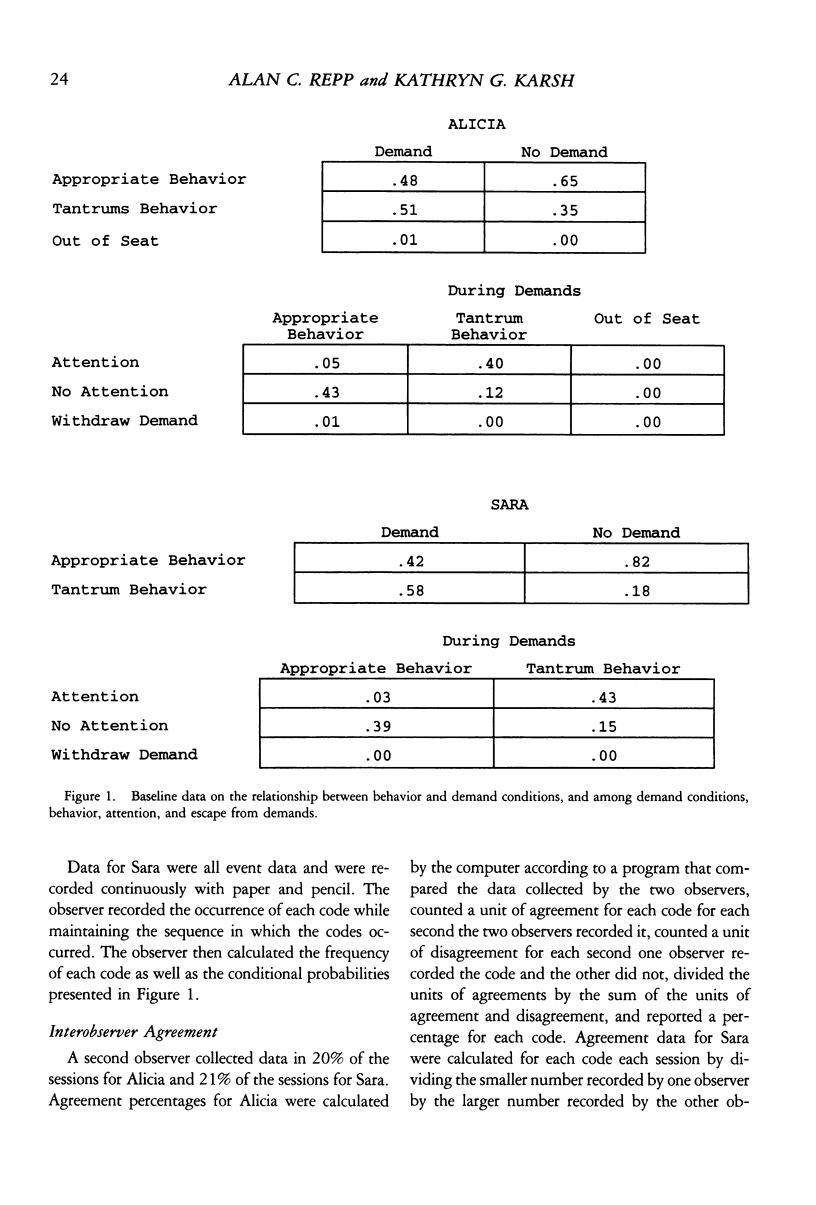
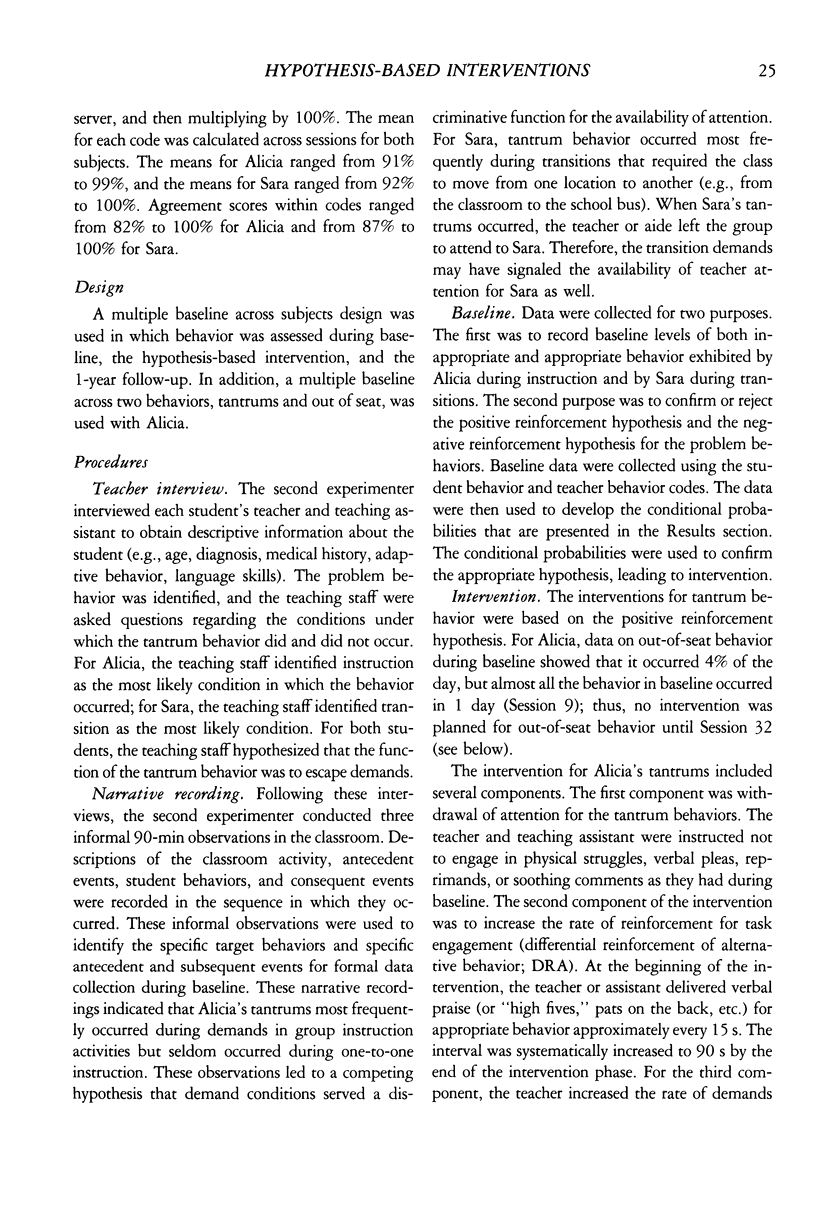

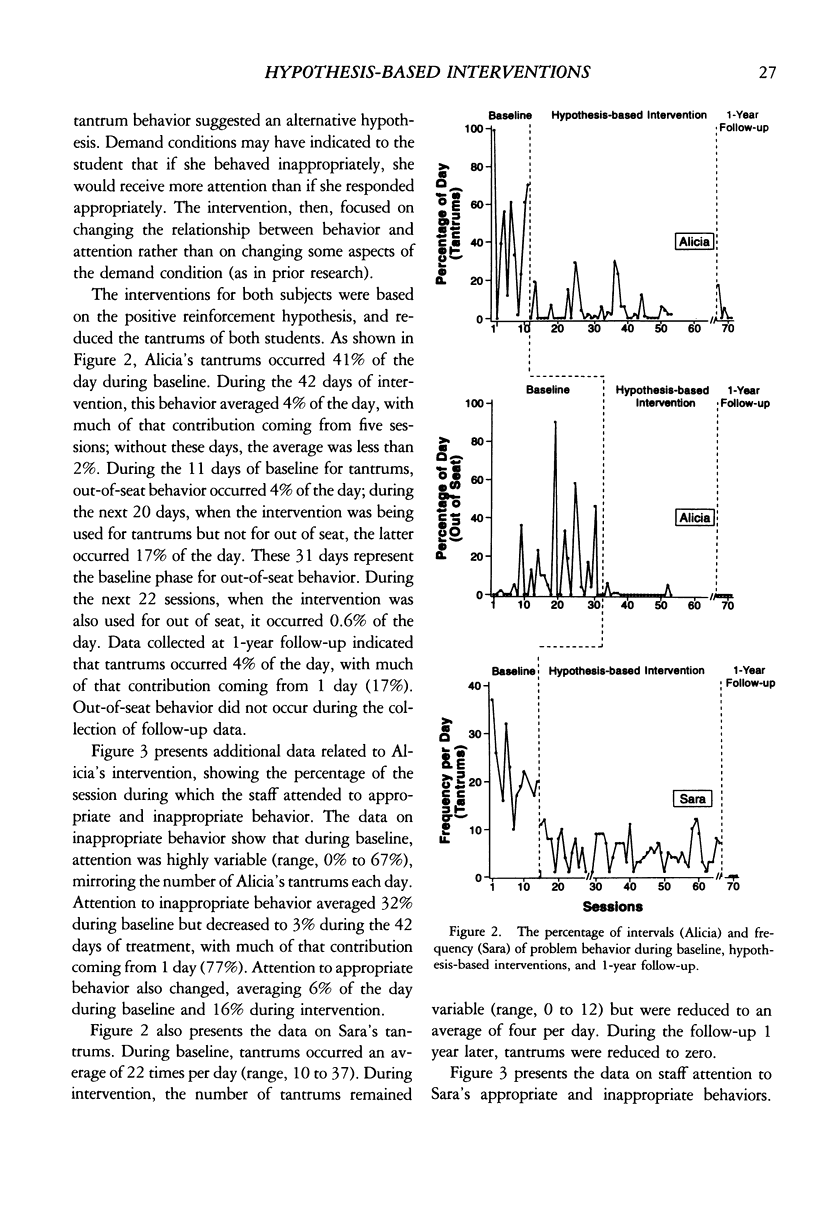
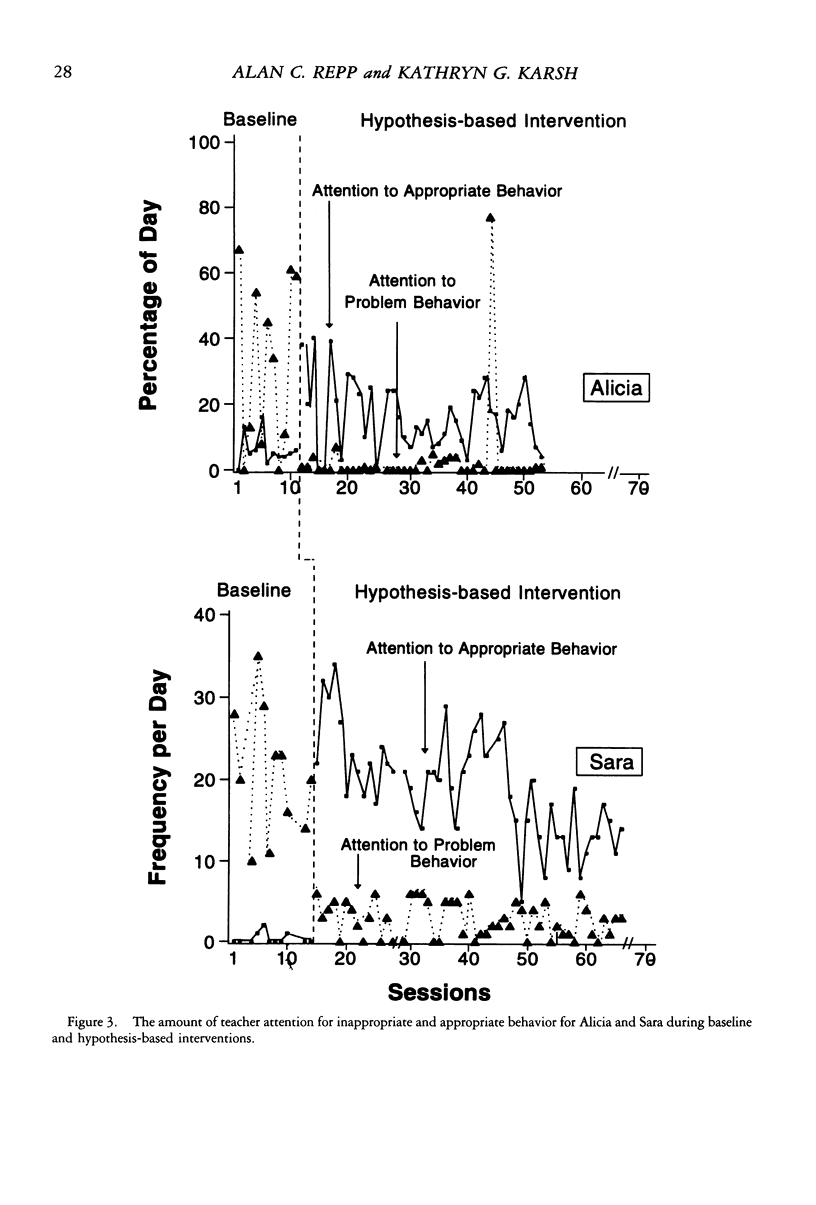
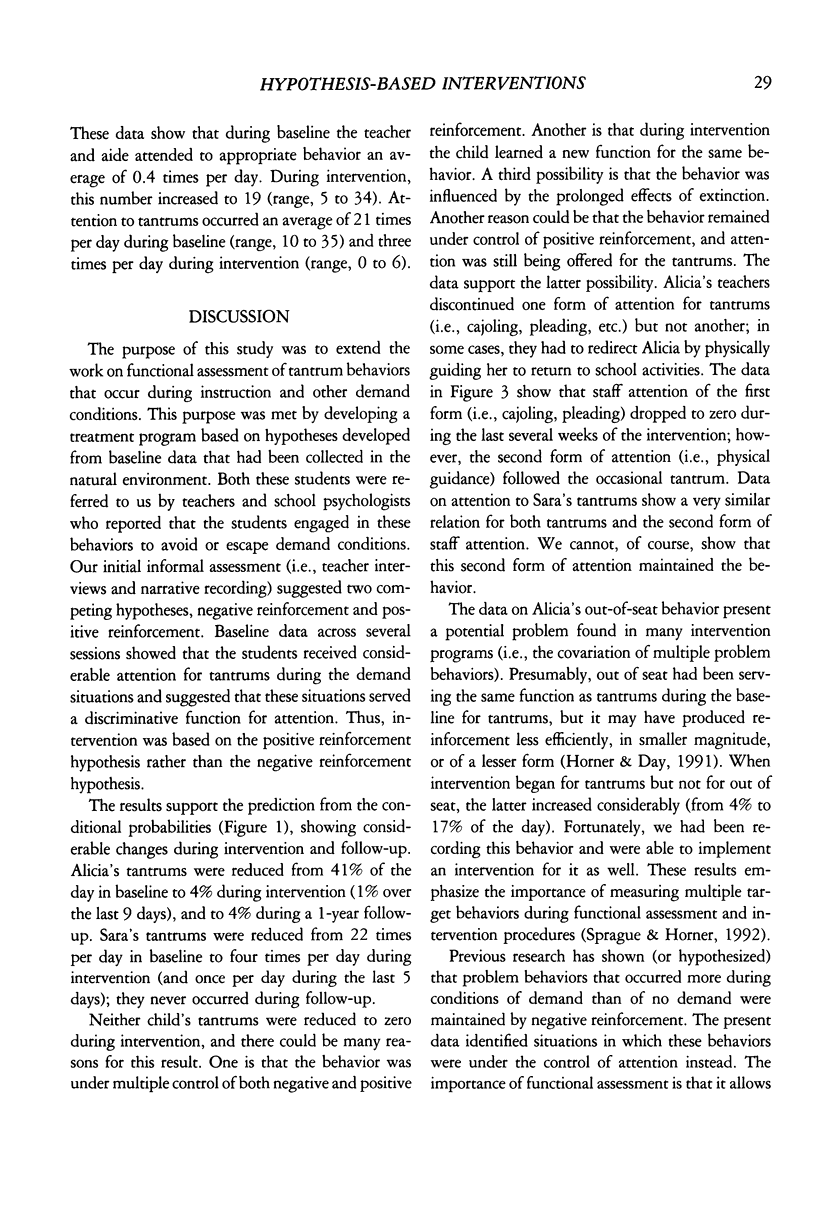


Selected References
These references are in PubMed. This may not be the complete list of references from this article.
- Carr E. G., Durand V. M. Reducing behavior problems through functional communication training. J Appl Behav Anal. 1985 Summer;18(2):111–126. doi: 10.1901/jaba.1985.18-111. [DOI] [PMC free article] [PubMed] [Google Scholar]
- Carr E. G., Newsom C. D., Binkoff J. A. Escape as a factor in the aggressive behavior of two retarded children. J Appl Behav Anal. 1980 Spring;13(1):101–117. doi: 10.1901/jaba.1980.13-101. [DOI] [PMC free article] [PubMed] [Google Scholar]
- Carr E. G., Newsom C. Demand-related tantrums. Conceptualization and treatment. Behav Modif. 1985 Oct;9(4):403–426. doi: 10.1177/01454455850094001. [DOI] [PubMed] [Google Scholar]
- Carr E. G. The motivation of self-injurious behavior: a review of some hypotheses. Psychol Bull. 1977 Jul;84(4):800–816. [PubMed] [Google Scholar]
- Derby K. M., Wacker D. P., Sasso G., Steege M., Northup J., Cigrand K., Asmus J. Brief functional assessment techniques to evaluate aberrant behavior in an outpatient setting: a summary of 79 cases. J Appl Behav Anal. 1992 Fall;25(3):713–721. doi: 10.1901/jaba.1992.25-713. [DOI] [PMC free article] [PubMed] [Google Scholar]
- Durand V. M., Carr E. G. Functional communication training to reduce challenging behavior: maintenance and application in new settings. J Appl Behav Anal. 1991 Summer;24(2):251–264. doi: 10.1901/jaba.1991.24-251. [DOI] [PMC free article] [PubMed] [Google Scholar]
- Durand V. M., Carr E. G. Social influences on "self-stimulatory" behavior: analysis and treatment application. J Appl Behav Anal. 1987 Summer;20(2):119–132. doi: 10.1901/jaba.1987.20-119. [DOI] [PMC free article] [PubMed] [Google Scholar]
- Horner R. H., Day H. M., Sprague J. R., O'Brien M., Heathfield L. T. Interspersed requests: a nonaversive procedure for reducing aggression and self-injury during instruction. J Appl Behav Anal. 1991 Summer;24(2):265–278. doi: 10.1901/jaba.1991.24-265. [DOI] [PMC free article] [PubMed] [Google Scholar]
- Horner R. H., Day H. M. The effects of response efficiency on functionally equivalent competing behaviors. J Appl Behav Anal. 1991 Winter;24(4):719–732. doi: 10.1901/jaba.1991.24-719. [DOI] [PMC free article] [PubMed] [Google Scholar]
- Iwata B. A., Pace G. M., Kalsher M. J., Cowdery G. E., Cataldo M. F. Experimental analysis and extinction of self-injurious escape behavior. J Appl Behav Anal. 1990 Spring;23(1):11–27. doi: 10.1901/jaba.1990.23-11. [DOI] [PMC free article] [PubMed] [Google Scholar]
- Kern L., Childs K. E., Dunlap G., Clarke S., Falk G. D. Using assessment-based curricular intervention to improve the classroom behavior of a student with emotional and behavioral challenges. J Appl Behav Anal. 1994 Spring;27(1):7–19. doi: 10.1901/jaba.1994.27-7. [DOI] [PMC free article] [PubMed] [Google Scholar]
- Lalli J. S., Browder D. M., Mace F. C., Brown D. K. Teacher use of descriptive analysis data to implement interventions to decrease students' problem behaviors. J Appl Behav Anal. 1993 Summer;26(2):227–238. doi: 10.1901/jaba.1993.26-227. [DOI] [PMC free article] [PubMed] [Google Scholar]
- Lerman D. C., Iwata B. A. Descriptive and experimental analyses of variables maintaining self-injurious behavior. J Appl Behav Anal. 1993 Fall;26(3):293–319. doi: 10.1901/jaba.1993.26-293. [DOI] [PMC free article] [PubMed] [Google Scholar]
- Lundervold D., Bourland G. Quantitative analysis of treatment of aggression, self-injury, and property destruction. Behav Modif. 1988 Oct;12(4):590–617. doi: 10.1177/01454455880124006. [DOI] [PubMed] [Google Scholar]
- Matson J. L., Gorman-Smith D. A review of treatment research for aggressive and disruptive behavior in the mentally retarded. Appl Res Ment Retard. 1986;7(1):95–103. doi: 10.1016/0270-3092(86)90021-4. [DOI] [PubMed] [Google Scholar]
- Northup J., Wacker D. P., Berg W. K., Kelly L., Sasso G., DeRaad A. The treatment of severe behavior problems in school settings using a technical assistance model. J Appl Behav Anal. 1994 Spring;27(1):33–47. doi: 10.1901/jaba.1994.27-33. [DOI] [PMC free article] [PubMed] [Google Scholar]
- Northup J., Wacker D., Sasso G., Steege M., Cigrand K., Cook J., DeRaad A. A brief functional analysis of aggressive and alternative behavior in an outclinic setting. J Appl Behav Anal. 1991 Fall;24(3):509–522. doi: 10.1901/jaba.1991.24-509. [DOI] [PMC free article] [PubMed] [Google Scholar]
- Repp A. C., Felce D., Barton L. E. Basing the treatment of stereotypic and self-injurious behaviors on hypotheses of their causes. J Appl Behav Anal. 1988 Fall;21(3):281–289. doi: 10.1901/jaba.1988.21-281. [DOI] [PMC free article] [PubMed] [Google Scholar]
- Sprague J. R., Horner R. H. Covariation within functional response classes: implications for treatment of severe problem behavior. J Appl Behav Anal. 1992 Fall;25(3):735–745. doi: 10.1901/jaba.1992.25-735. [DOI] [PMC free article] [PubMed] [Google Scholar]
- Weeks M., Gaylord-Ross R. Task difficulty and aberrant behavior in severely handicapped students. J Appl Behav Anal. 1981 Winter;14(4):449–463. doi: 10.1901/jaba.1981.14-449. [DOI] [PMC free article] [PubMed] [Google Scholar]


